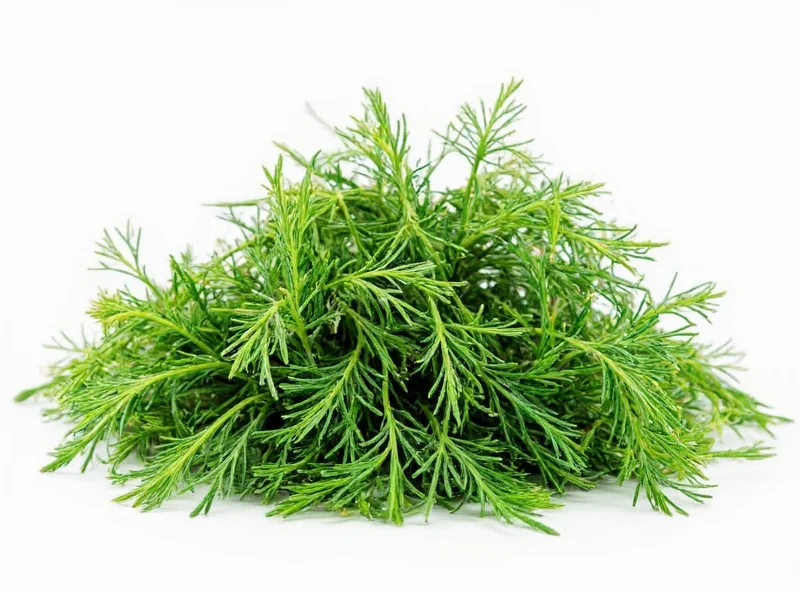When you reach for fresh dill only to find your herb garden depleted or grocery store shelves empty, knowing reliable dill herb substitutes becomes essential. Dill's distinctive flavor—a delicate balance of grassy, citrusy, and subtle anise notes—makes it irreplaceable in many dishes, but strategic substitutions can save your recipe without compromising quality. Understanding which alternatives work best for specific applications transforms a potential cooking disaster into a successful meal.
Top Dill Herb Substitutes for Every Kitchen Emergency
Not all dill replacements work equally well across recipes. The key to successful substitution lies in matching the flavor profile and texture requirements of your specific dish. Here's a detailed breakdown of the most effective alternatives:
Tarragon: The Sophisticated Alternative
French tarragon offers the closest flavor match to dill with its mild anise undertones and slight bitterness. This dill herb substitute for fish recipes shines in creamy sauces, egg salads, and seafood dishes where dill traditionally appears. Use a 1:1 ratio when substituting fresh tarragon for fresh dill, but note that tarragon's flavor intensifies when cooked, so add it toward the end of preparation.
Fennel Fronds: The Texture Twin
Often discarded with the bulb, fennel fronds provide nearly identical feathery texture to dill with a milder licorice flavor. This fresh dill alternative for salads works beautifully in cucumber salads, potato salads, and as a garnish. Use 1.5 times the amount of fennel fronds compared to dill since their flavor is more subtle. The fronds' delicate structure makes them perfect for raw applications where dill's texture matters most.
Dill Seed: The Pickling Powerhouse
When making pickles or breads that traditionally call for dill weed, dill seed becomes your best friend. Use 1 teaspoon of dill seed for every 1 tablespoon of fresh dill. While the seed lacks the fresh herb's grassy notes, it delivers the characteristic dill flavor essential for dill herb replacement in pickling recipes. Toast the seeds lightly before use to enhance their aromatic qualities.
Parsley and Lemon Zest: The Accessible Duo
For most general cooking applications, combining flat-leaf parsley with lemon zest creates a surprisingly effective dill substitute. Use 2 tablespoons chopped parsley plus 1 teaspoon lemon zest for every 1 tablespoon fresh dill. This combination works particularly well as a dill weed substitute for tzatziki and other yogurt-based sauces where dill's citrus notes matter most.
Caraway: The Bold Option
Caraway seeds share dill's anise characteristics but with a stronger, earthier profile. Use sparingly—just 1/2 teaspoon caraway seeds replaces 1 tablespoon fresh dill. This dill herb substitute for rye bread works well in hearty potato dishes, cabbage recipes, and traditional Eastern European cuisine where stronger flavors are welcome.
| Substitute | Flavor Profile | Best For | Ratio (vs Fresh Dill) |
|---|---|---|---|
| Tarragon | Mild anise, slightly bitter | Fish, creamy sauces, egg salad | 1:1 |
| Fennel Fronds | Subtle licorice, fresh | Salads, vegetable dishes, garnish | 1.5:1 |
| Dill Seed | Earthy, concentrated dill | Pickling, breads, stews | 1 tsp seed = 1 tbsp fresh |
| Parsley + Lemon Zest | Grassy, citrusy | Tzatziki, dressings, general cooking | 2 tbsp parsley + 1 tsp zest = 1 tbsp dill |
| Caraway Seeds | Strong anise, earthy | Rye bread, cabbage dishes, hearty stews | 1/2 tsp seeds = 1 tbsp fresh |
Specialized Substitutions for Specific Dishes
Understanding which dill substitute works best for particular recipes prevents culinary disappointment. These targeted recommendations address common cooking scenarios:
For Fish and Seafood Dishes
When preparing salmon, trout, or other delicate fish, tarragon provides the most seamless substitution. Its similar aromatic compounds complement fish without overwhelming delicate flavors. Add fresh tarragon during the last 5 minutes of cooking to preserve its volatile oils. For best dill substitute for salmon recipes, combine tarragon with a squeeze of lemon juice to mimic dill's citrus notes.
For Tzatziki and Yogurt Sauces
The cooling cucumber-yogurt sauce traditionally relies on dill's bright notes. When dill's unavailable, the parsley-lemon zest combination works surprisingly well. Add 1/4 teaspoon of dried dill weed (reconstituted in 1 teaspoon warm water) to boost the dill flavor profile in this fresh dill alternative for tzatziki.
For Pickling and Preserving
Dill seed becomes essential here—never substitute fresh herb alternatives in pickling recipes. Use 1 teaspoon dill seed per quart of pickling liquid, plus 2-3 heads of fresh dill flower (if available) for authentic flavor. This dill herb replacement in pickling recipes delivers the characteristic sour pickle taste without which your preserves would lack authenticity.
Avoiding Common Substitution Mistakes
Even with the right substitute, improper usage can ruin your dish. Steer clear of these frequent errors:
- Overcompensating with quantity - Most substitutes require different ratios than dill. Using equal amounts of tarragon or caraway often creates overpowering results.
- Adding substitutes too early - Delicate herbs like tarragon lose flavor when cooked too long. Add near the end of preparation.
- Mixing incompatible substitutes - Combining tarragon and caraway creates a confusing flavor profile that distracts from your dish.
- Ignoring texture requirements - In salads and garnishes, fennel fronds work better than seed-based substitutes which lack visual appeal.
Dried vs. Fresh Herb Substitutions
When your recipe calls for dried dill weed rather than fresh, the substitution dynamics change. Dried dill has more concentrated flavor but lacks fresh dill's bright citrus notes. Use these conversion guidelines:
- 1 tablespoon fresh dill = 1 teaspoon dried dill weed
- When substituting dried alternatives, use half the amount you would of fresh substitutes
- Reconstitute dried herbs in warm water or broth for 10 minutes before use to revive flavor
- Add dried substitutes earlier in cooking to allow flavors to infuse











 浙公网安备
33010002000092号
浙公网安备
33010002000092号 浙B2-20120091-4
浙B2-20120091-4